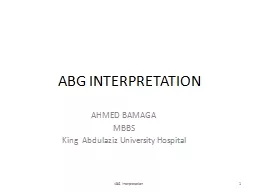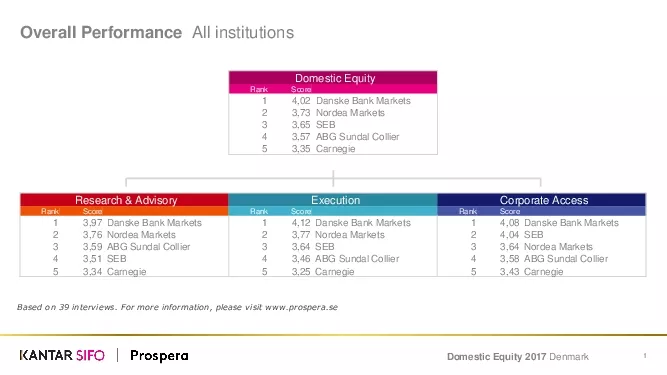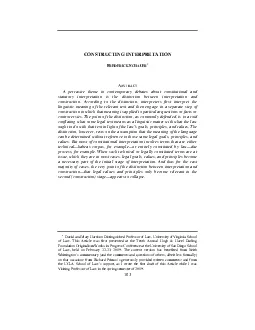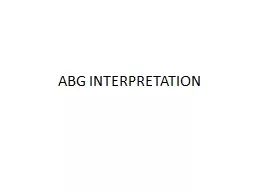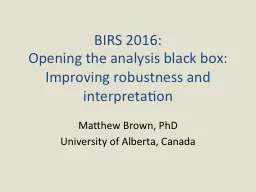PPT-ABG Interpretation 1 ABG INTERPRETATION
Author : liane-varnes | Published Date : 2020-04-04
AHMED BAMAGA MBBS King Abdulaziz University Hospital ABG Interpretation 2 ABG Interpretation First does the patient have an acidosis or an alkalosis Second what
Presentation Embed Code
Download Presentation
Download Presentation The PPT/PDF document " ABG Interpretation 1 ABG INTERPRETATION" is the property of its rightful owner. Permission is granted to download and print the materials on this website for personal, non-commercial use only, and to display it on your personal computer provided you do not modify the materials and that you retain all copyright notices contained in the materials. By downloading content from our website, you accept the terms of this agreement.
ABG Interpretation 1 ABG INTERPRETATION: Transcript
Download Rules Of Document
" ABG Interpretation 1 ABG INTERPRETATION"The content belongs to its owner. You may download and print it for personal use, without modification, and keep all copyright notices. By downloading, you agree to these terms.
Related Documents

